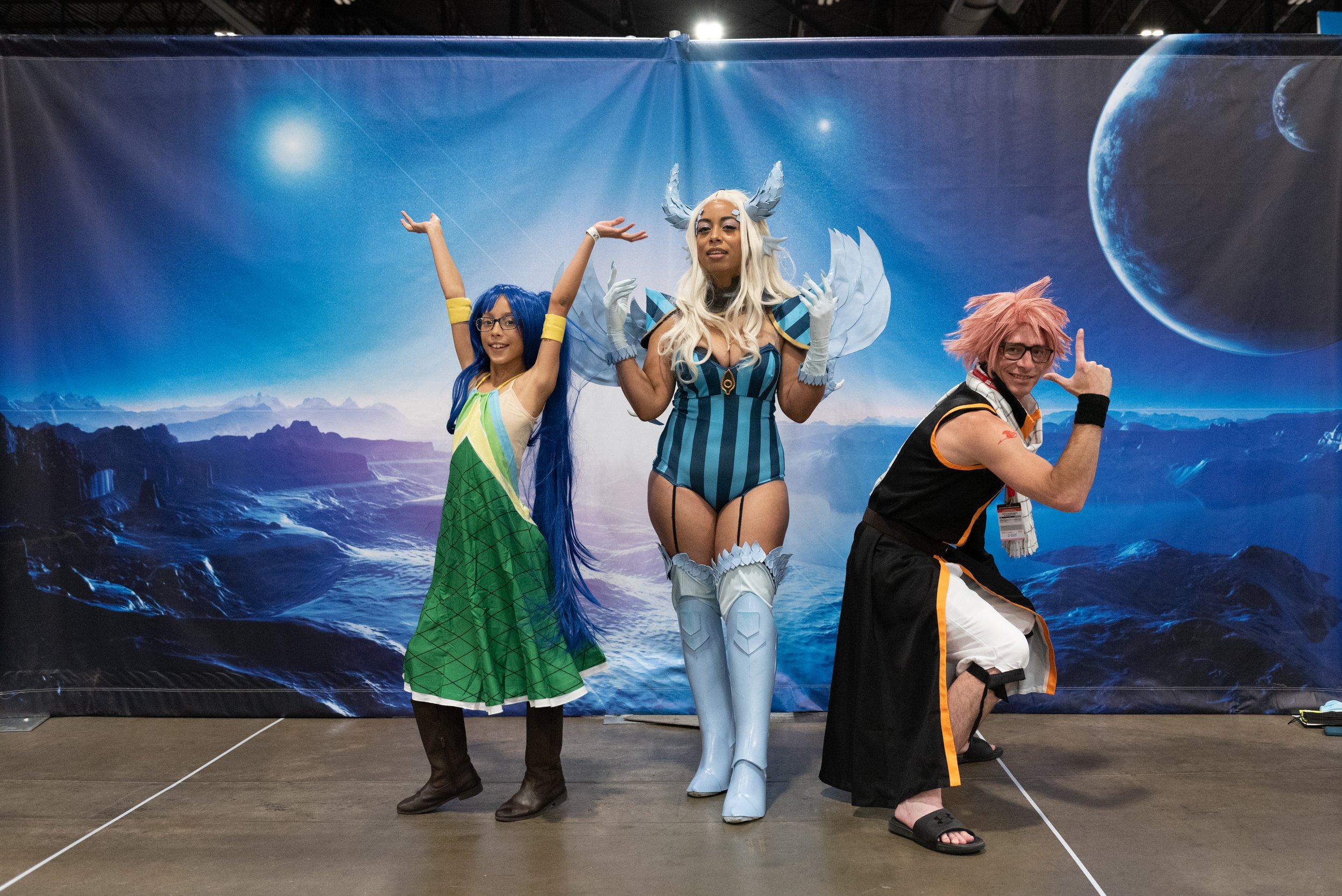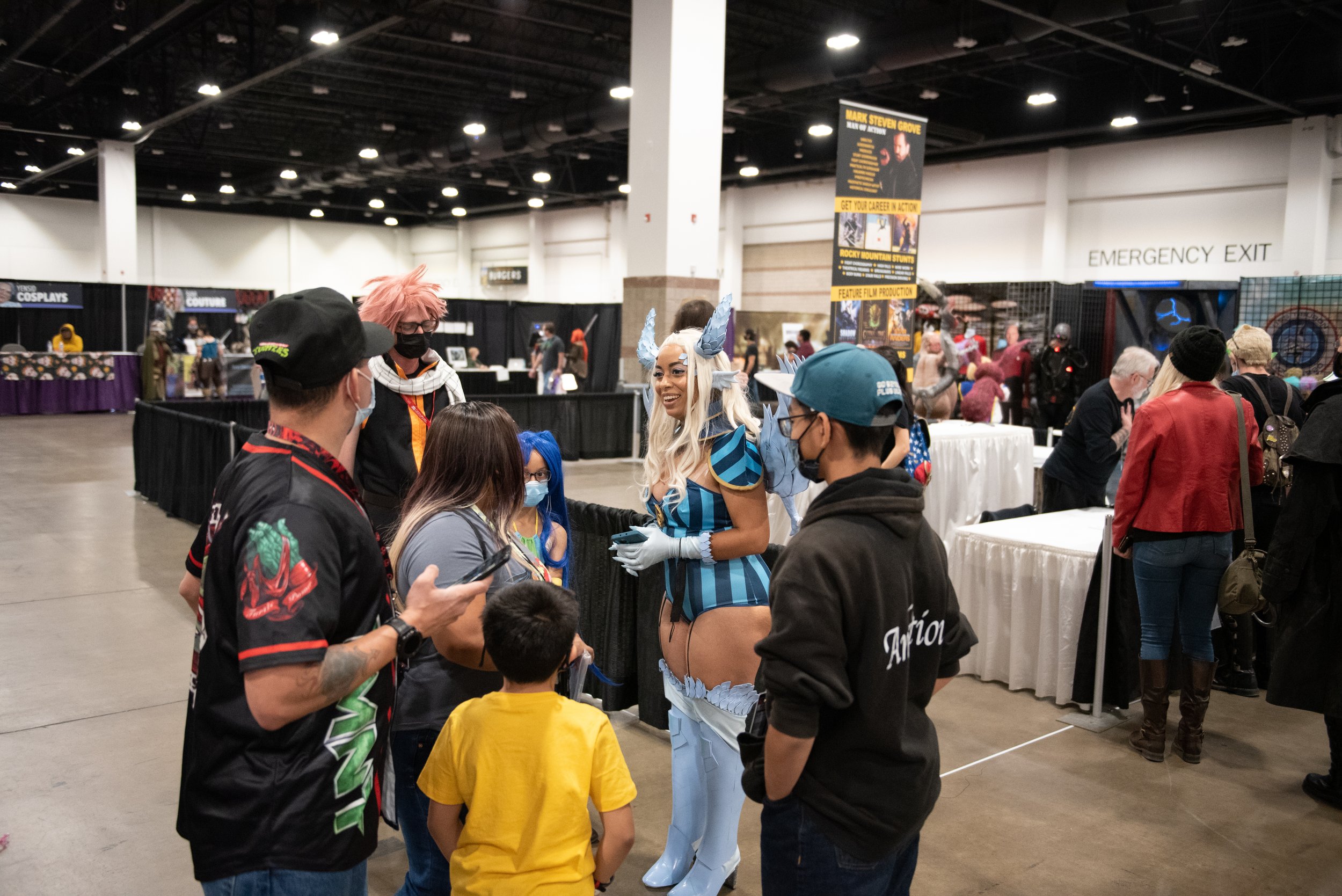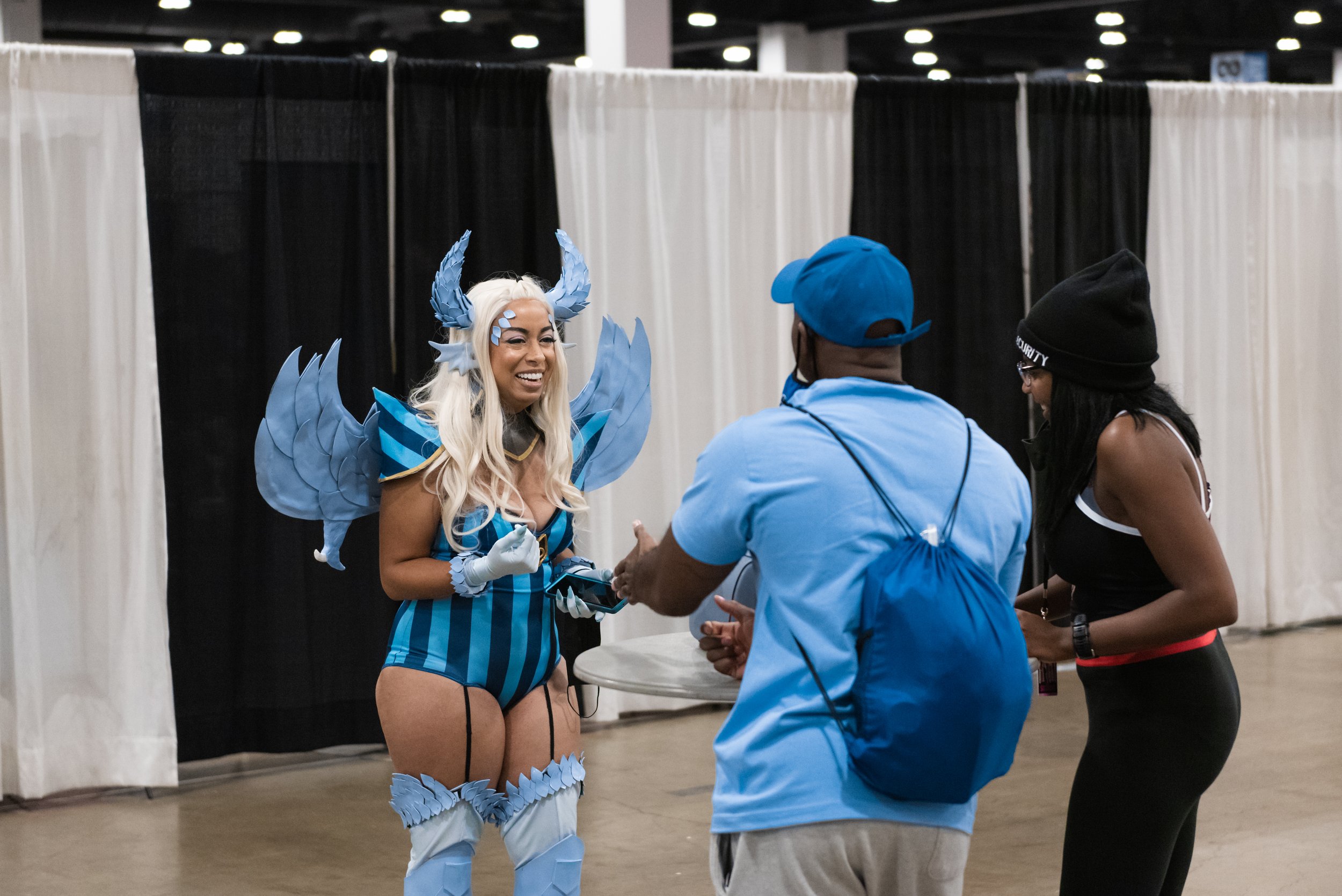Seeking change through Black cosplay
Story and Photos By Adrian Michael
Standing in a blue striped leotard Iwith large ethylene vinyl acetate foam wings protruding from her back and sharp pointy horns sticking up from her head is a female cosplayer who performs under the stage name Tif von Batsy.
“I wanted an outfit that stands out, and I didn’t want to wear a costume that everyone else wears,” said von Batsy, who is cosplaying as Mirajane’s Satan Soul: Halphas, a member of the Fairy Tail Guild anime universe.
“I like people asking me about my costume. I don’t always choose costumes that people know.”
Not only does von Batsy’s eye-catching costume distinguish her from other cosplayers, but her entire presence is also an anomaly, as she is a Black cosplayer coexisting in a space that doesn’t have many participants. With an Austrian mother and an African-American father, von Batsy identifies as Black and white, but according to her, people only see her as Black.
“I’ve heard people refer to me as ‘the Black girl,’ or say things like ‘She’s just a Black person,’ or, ‘You speak proper [English] for a Black person.’”
While she frequently endures vitriol and criticism from peers and strangers regarding her ethnicity, von Batsy considers being of mixed race interesting because it gives her two perspectives.
“I hate going into a situation assuming someone will be racist, but sometimes I can sense it; it’s usually either subtle or very blatant.” She recalls a situation when she worked at a party princess company and was told that she could only play Princess Jasmine, Princess Tiana, or the fairy Iridessa, but she says she refuses to let others define her.
“I go about my day,” said von Batsy. “I’m just always aware of my surroundings and situations.”
A veteran of anime and comic conventions, she’s been attending these events since she was a teenager, when she and her mother started designing costumes. “I’ve always been a fan of anime and loved dressing up as characters from Disney and other cartoons,” she said.
Describing her experience as one of few cosplayers of color, von Batsy said, “I would like to see more people of color participating in cosplay, including Black men, and I think those participating should be welcoming of Black cosplayers. I also want to see more people of color in the industry, including more Black anime characters.”
One reason there may not be as many cosplayers of color is that traditional anime typically features people with white skin, blue eyes, and blonde hair. On the flip side, Black characters are often seen as silly and idiotic, and Black anime is often portrayed with stereotypical tropes like big lips and dark skin — characteristics reminiscent of Sambo during the Jim Crow era.
“We just want to have equal ground,” said von Batsy “Some people think they can only be this or that because that’s who they think they have to be. There need to be more people who branch out and be different and are not scared to step outside of comfort zone.”
The character von Batsy plays is happy, positive & friendly. She chose it because, according to her, she enjoys dressing up as characters that she likes and associates with. She also likes helping people and walking around mingling as the character she’s portraying.
Even with all the optimism and open-mindedness that von Batsy strives to exude, she acknowledges the challenges within the cosplay sphere. Von Batsy has run into people who find it offensive that she plays a character with a different skin tone. They tell her it’s not right to cosplay someone who isn’t Black.
“I look at it this way: When cosplaying, you dress up because you relate to the character – it has nothing to do with skin color. You don’t need to imitate another person’s actual skin or race. The industry needs to be accepting of Black cosplayers who want to be any character they want. We’re not disrespecting the white character; we’re not putting on white skin. I don’t know how to get rid of that racist mindset.”
Based on the trend toward more inclusion within the fandom space, it appears the industry is noticing and slowly starting to change. Recently, Miles Morales become the first Spider-Man of color, and Disney is going to release a live-action film of “The Little Mermaid,” with Ariel played by a Black actress. More white voice actors are stepping away from playing People of Color, and more studios are pushing for voice actors to be of the same ethnicity as the characters they’re portraying.
“The majority of people hate that comic heroes are becoming Black,” said von Batsy, “but it shouldn’t matter. We need more diverse characters. People have to speak up and do the right thing — hire people for what they can do and not just to be a token.”
Von Batsy believes it’s important not only for herself but for others to be seen dressing up as different people. “It’s a level of empowerment. I like positivity, and I have a belief that people should ask ‘Why can’t we do this?’ I want people to know they’re going to look awesome, and they need to hear and see more encouragement like this.”
Von Batsy has discovered her purpose in cosplaying, and she encourages others to find a way to find their own. “Be confident,” von Batsy said. “People will tell you things not to do, and you have to have resolve and confidence. Do things that matter the most to you!”
This story was featured in the December 2021 issue of The Denver VOICE






